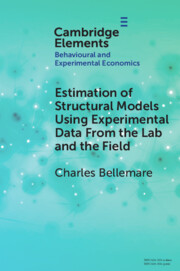Element contents
Estimation of Structural Models Using Experimental Data From the Lab and the Field
Published online by Cambridge University Press: 11 January 2023
Summary
- Type
- Element
- Information
- Online ISBN: 9781009362627Publisher: Cambridge University PressPrint publication: 09 February 2023



